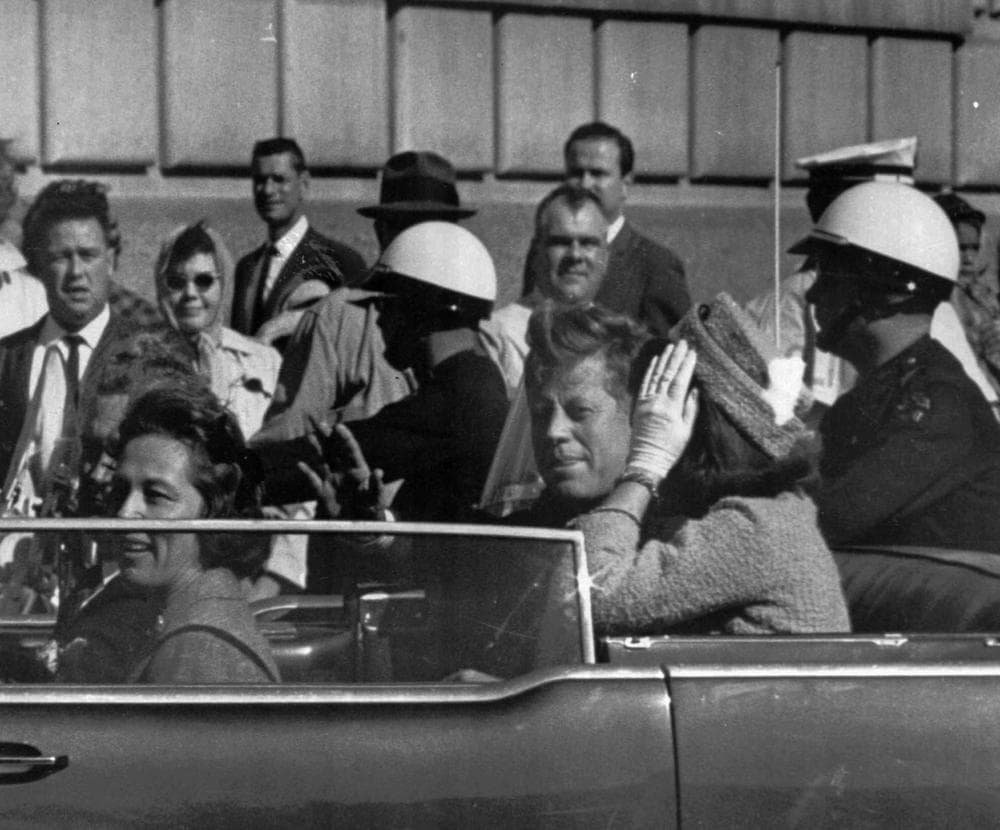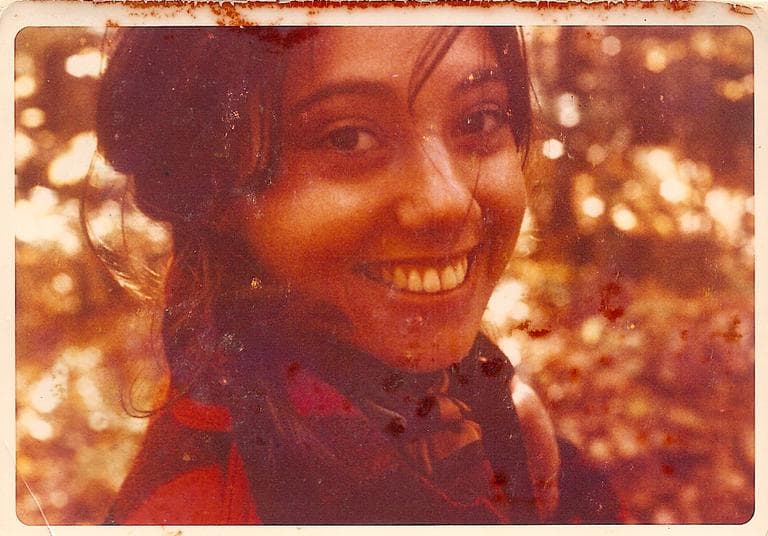Advertisement
A Less Than Perfect Day On Utopia Parkway
They let us out of school early. The teachers were crying. There must have been an announcement on the PA, and sounds must have come from the teachers' mouths. But there are no sounds in my memory, just shock, numbness, and a weird stiffness.
I was outside, let loose on a school day, released but not free; burdened and stilled and frightened by the frieze of TVs in the ticky-tack houses in my Queens neighborhood. These were small well-kept brick bungalows on Utopia Parkway, the long urban boulevard I traveled between home and school. Many had picture windows, and in every house on Utopia, as we called it — this wide, multi-lane thoroughfare that stretched from Northern Boulevard to Union Turnpike, crossing the Long Island Expressway — the TV was on. Black and white pictures flickered in every living room, the same black and white pictures in every window. Jack and Jackie in a car, or a chariot, it seemed, sweeping through a stage set. I thought they would always be in their chariot, snug and safe and beautiful in a modern fairy tale.
There are no sounds in my memory, just shock, numbness, and a weird stiffness.
In 1963, my newly built high school was already on triple session, overflowing with three thousand students. I can't remember what weird time of day I spent in school that semester, but because of the staggered sessions, we were always in school at peculiar hours — in the cafeteria for "lunch" in mid-morning (meatballs at 10 a.m.) or just before dark — but there must have been overlap the period we were released as thousands of kids were on the street, along with hundreds of teachers, whom we rarely saw outside — real humans, suddenly, getting into cars, their faces strained and pale.
On Utopia Parkway, there were no people in the picture windows, no adults on the street, no cats or dogs. I had a wild thought that everyone was dead, and that just TV remained, and no one was running the TV operation — cameras, stations, towers, transmitters — which would explain why the same pictures kept repeating. This idea persisted over the days as I saw Jack and Jackie in their motorcade over and over, and there were no commercials. This being a capitalist country, I reasoned, if there were no longer commercials, there was probably no one running the show.
I also thought, if our president could be shot, there is no one running the show. At first I thought, there is no one running the show any longer, and later, there is no one running the show, ever.

When I got home, the house was still. My mother wasn't cooking, or talking on the phone, or vacuuming with the Hoover upright that growled as it turned corners and screeched on linoleum floors. She was in the bedroom, lying down, her plaid car coat over her legs, street shoes on top of the clean quilt. I looked out the dinette window and saw the flickering TVs in the houses across the street. I went up to my attic room and through the casement window saw the houses on the next block, all with the same flickering black and white pictures of Jack and Jackie. I heard my father's station wagon pull into the driveway. He didn't slam doors and yell like he usually did, or issue critiques and injunctions. No one turned on the TV. No one spoke, and there was no dinner.
When we went back to high school, it was oddly quiet, even in the halls, even when the bell rang. There were no grief counselors in 1963, and if there had been, they would have needed grief counselors, too.
In this bad scrapbook is the unchanging, flickering black and white frieze of Jack and Jackie in their chariot.
Brain scientists tell us that our memories are inaccurate as every time we return to an old memory, we edit it, and so the original experience is long gone. What we think happened is only our most recent revision. But perhaps this is mainly true of events we observe first hand, and not of events we observe second hand, from media images that we view repeatedly over the years. We have the personal memories we revise, and the cultural memories that become neurological snapshots. I have an entire neurological scrapbook of these, a good scrapbook of the American flag being planted on the surface of the moon, the people gathered for Martin Luther King, Jr.’s “I Have a Dream” speech, and of the Berlin Wall tumbling down. I have a bad scrapbook with images of concentration camp prisoners, stacked like kindling on their bunks; of the naked little Vietnamese girl, napalmed, running; and of Jackie, her hair still shiny, with fresh red blood on her pink suit. In this bad scrapbook is the unchanging, flickering black and white frieze of Jack and Jackie in their chariot.
…
In the spring of 1965 I would graduate from high school, and in the autumn, head north to Boston University. I loved old Boston. There were no ticky-tack houses and Commonwealth Avenue was vastly different from Utopia Parkway. I lived in a suite of fascinating girls and was allowed to wear slacks, not a skirt, because I was an art student. I learned about perspective and design, worked in the kitchen in the student union, and took a night job at a movie theater in Kenmore Square. But in 1968 when Martin Luther King, Jr. was murdered, I dropped out.
For a long time, there was no good place anywhere. It took a while to figure out, as Gandhi taught and JFK would have, we must make the good place.

This program aired on November 20, 2013. The audio for this program is not available.